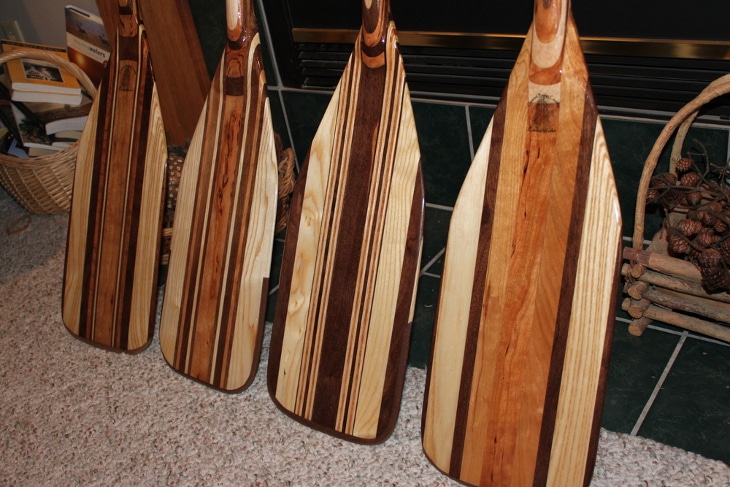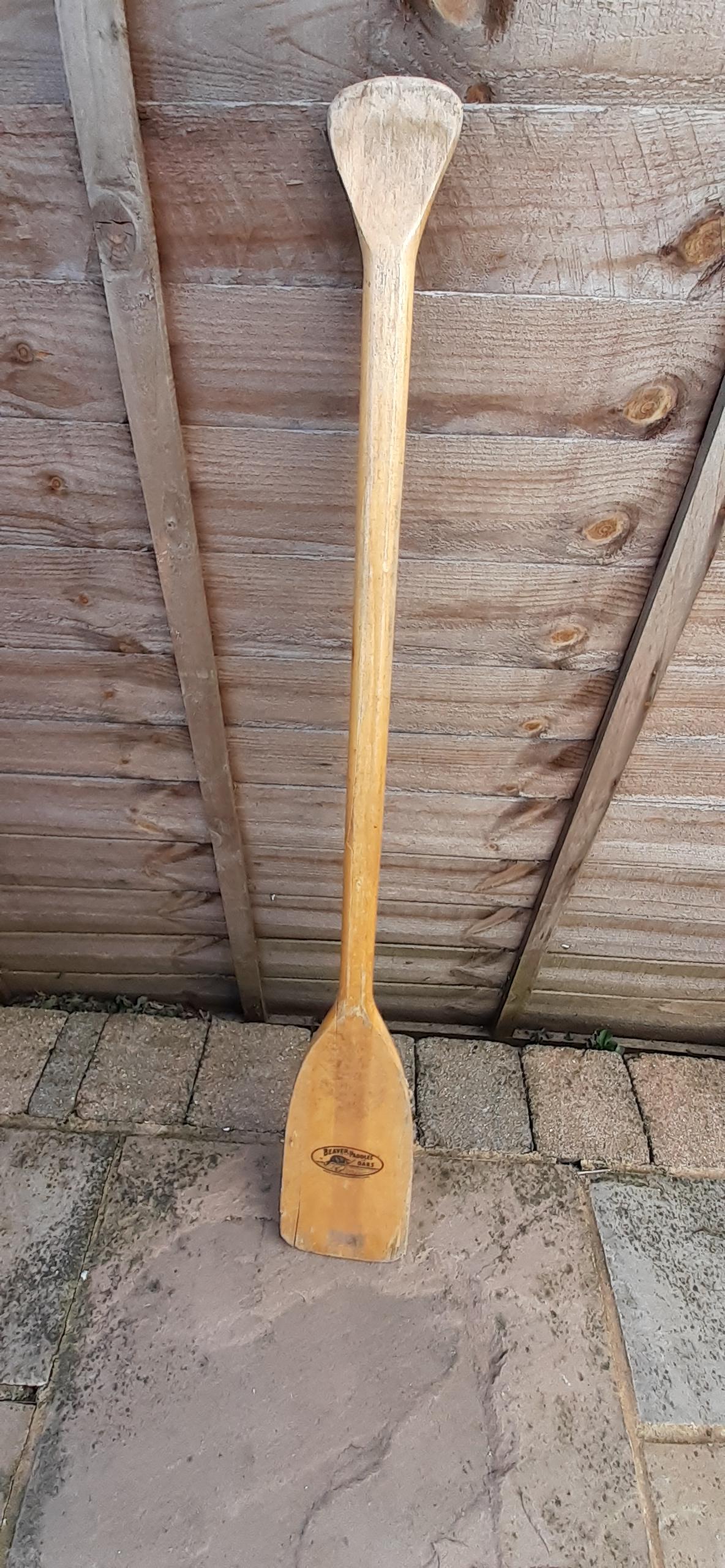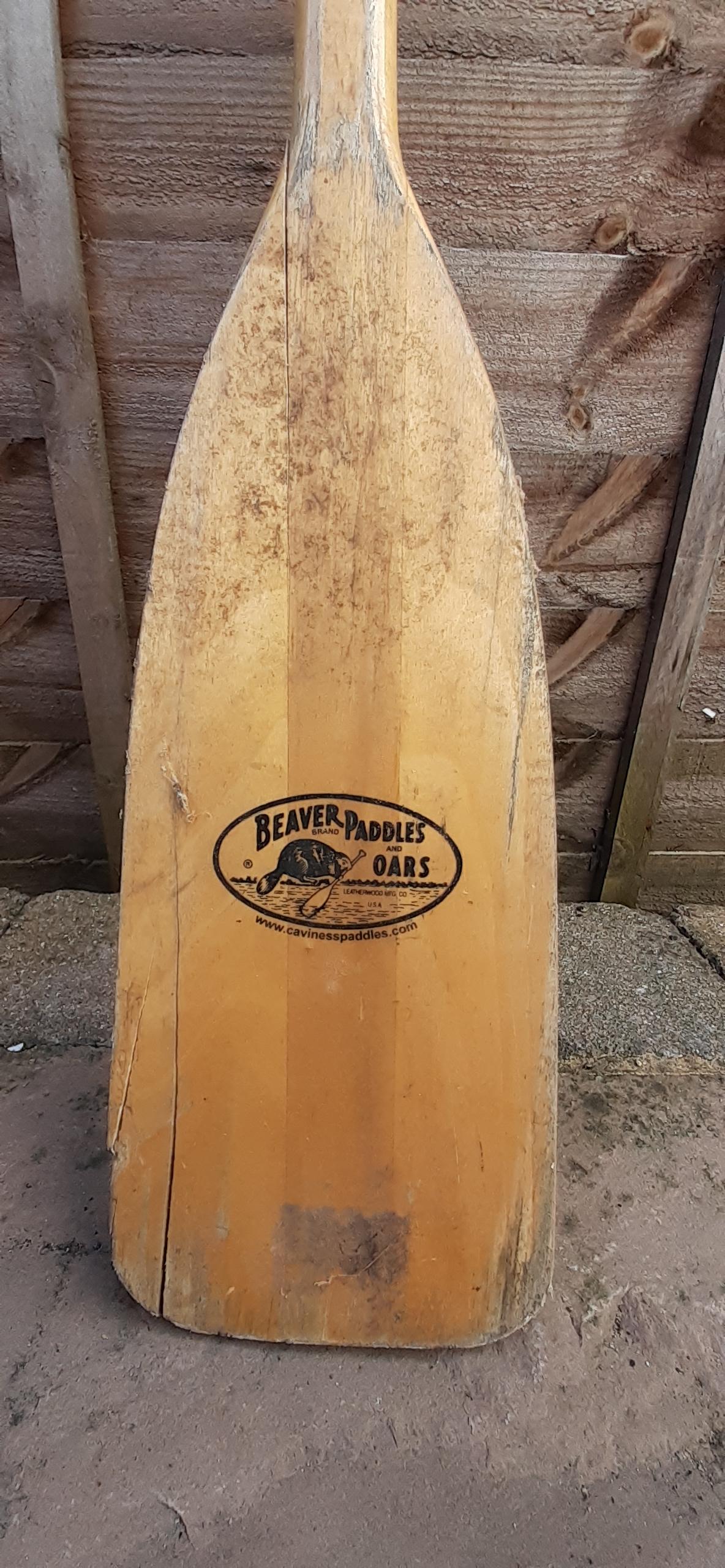I have used this quiet time to do something ive wanted to do for ages, and i have just finished it - a stitch and tape canoe! Maybe ill post on that seperately.
Anyway all thats left to do is make a pair of oars. I have some nice ash boards i milled myself, thing is they are are about a foot too short. Id like to use ash though because itll match the 'thwarts' (seats) in the boat, and i dont really want to buy any more because other than the paint, ive more or less completely made the boat from stock i had already.
So i'm wondering about making each oar too short and then extending it. Only thing is, as oars get quite a lot of lever force through them im not confident either of these will work, but im interested to know what you guys think.
Option A) cutting midway along the shaft and turning an extending piece of a nice contrasting timber to go in the middle. The shaft is supposed to be 28mm diameter so i could make nice long tenons that come out of either end of the extending piece., but thats still not a huge amount of total width to play with. And i just cant visualise if this joint will be strong enough. Part of me feels like good long round tenons in a round shaft, snug and well glued, might as well be one length of wood? Any chairmakers out there with a good instinct for this sort of thing?
Option B) More of a V shaped splice, at the beginning of the paddle. Larger splicing/joint area, could re-inforced more thoroughly, but the paddle gets the most water exposure and bears the brunt of the action
Option C) Like A, but with a length of reinforcing steel bar in the middle as well as tenons. Risks rust, though it will be getting a very thorough sealing...
Do stick your oars in, any thoughts appreciated
Anyway all thats left to do is make a pair of oars. I have some nice ash boards i milled myself, thing is they are are about a foot too short. Id like to use ash though because itll match the 'thwarts' (seats) in the boat, and i dont really want to buy any more because other than the paint, ive more or less completely made the boat from stock i had already.
So i'm wondering about making each oar too short and then extending it. Only thing is, as oars get quite a lot of lever force through them im not confident either of these will work, but im interested to know what you guys think.
Option A) cutting midway along the shaft and turning an extending piece of a nice contrasting timber to go in the middle. The shaft is supposed to be 28mm diameter so i could make nice long tenons that come out of either end of the extending piece., but thats still not a huge amount of total width to play with. And i just cant visualise if this joint will be strong enough. Part of me feels like good long round tenons in a round shaft, snug and well glued, might as well be one length of wood? Any chairmakers out there with a good instinct for this sort of thing?
Option B) More of a V shaped splice, at the beginning of the paddle. Larger splicing/joint area, could re-inforced more thoroughly, but the paddle gets the most water exposure and bears the brunt of the action
Option C) Like A, but with a length of reinforcing steel bar in the middle as well as tenons. Risks rust, though it will be getting a very thorough sealing...
Do stick your oars in, any thoughts appreciated








































